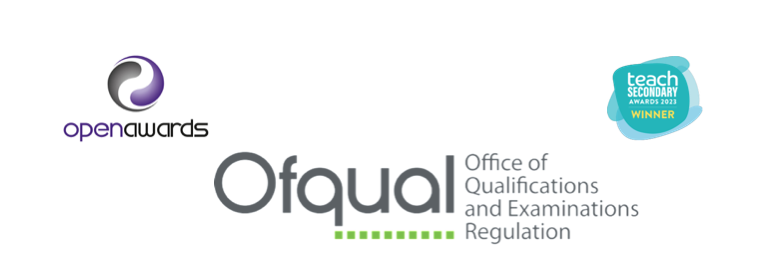
The Importance of learning Touch Typing skills with the onset of Digital Exams
In an era where digitalisation is reshaping the landscape of education, proficiency in touch typing has emerged as a crucial skill for students, particularly when facing digital exams. Touch typing, the ability to type without looking at the keyboard, coupled with the utilisation of specialised software like KAZ, offers students a myriad of advantages that enhance their performance and experience during digital assessments.
Firstly, the speed and accuracy gained through touch typing with can significantly impact a student's efficiency in completing exam tasks. Digital exams often have time constraints, and every keystroke counts towards completing the assessment within the allocated timeframe. With traditional hunt-and-peck typing methods, students may struggle to keep up with the pace of the exam, leading to incomplete responses or errors. However, mastering touch typing allows students to type swiftly and accurately, maximising their productivity and enabling them to fully demonstrate their knowledge within the given time.
Moreover, touch typing proficiency fosters a smoother exam experience by reducing cognitive load. When students are proficient in touch typing, they no longer need to divert their attention to locate keys on the keyboard, enabling them to focus entirely on comprehending and answering exam questions. This streamlined cognitive process enhances concentration and reduces the likelihood of mental fatigue, ensuring that students can maintain optimal performance throughout the exam duration.
Additionally, touch typing with KAZ promotes accessibility and inclusivity in digital exams. For students with physical disabilities or limitations, traditional typing methods may pose significant challenges and hinder their ability to express themselves effectively. However, learning to type, particularly with adaptive software like KAZ, which accommodates diverse needs, ensures that all students can participate in digital assessments on an equal footing.
Did you know that KAZ were selected by OpenAwards to produce the only touch typing qualifications available in the UK in Level 1 and level 2?
It's important to note that the proficiency gained through touch typing extends beyond the realm of digital exams and into various facets of academic and professional life. In an increasingly digital-centric society, effective communication and information processing skills are indispensable for success. By mastering touch typing, students develop a fundamental competency that enhances their productivity, communication, and digital literacy skills, empowering them to excel not only in exams but also in future academic pursuits and careers.
In conclusion, touch typing holds immense importance for students preparing to undertake digital exams. By cultivating speed, accuracy, efficiency, and accessibility, touch typing equips students with the essential tools needed to navigate the challenges of digital assessments effectively. Moreover, the proficiency gained through touch typing extends far beyond exam settings, providing students with a valuable skill set that enhances their academic and professional capabilities in an increasingly digitalised world. As such, integrating the KAZ touch typing course into educational curricula is not merely an option but a necessity in preparing students for the demands of the digital age.
4/22/2024 3:44:02 AM
105
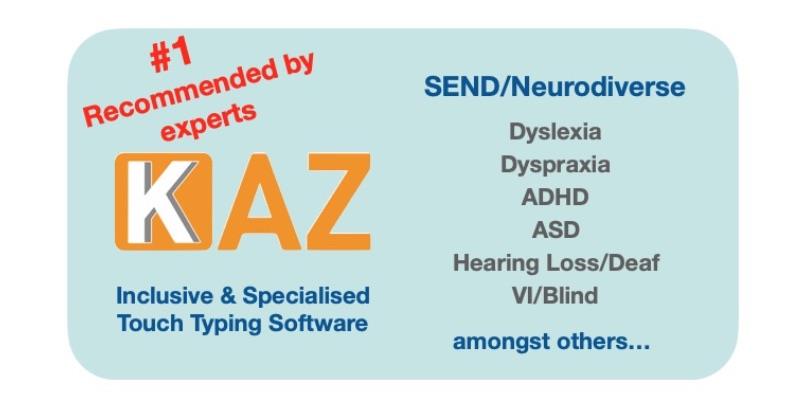
The #1 recommended course by the experts.
Sensible Senco discusses KAZ:
<iframe width="560" height="315" src="https://www.youtube.com/embed/s3ahMqklAMI" title="YouTube video player" frameborder="0" allow="accelerometer; autoplay; clipboard-write; encrypted-media; gyroscope; picture-in-picture; web-share" allowfullscreen></iframe>
Paloma Forde:
https://kaz-type.com/blog/guest-blog-the-vital-connection-between-touch-typing-and-dyslexic-learners-by-paloma-forde-the-invisible-gift
DSA and Access to Workplace Specialists:
https://kaz-type.com/newfolder/Ebook-Experts-Review-B.pdf
Teach Secondary winner:
Best software SEND
3/4/2024 3:25:12 AM
1232

KAZ Type, BBC Schools Dance Mat Typing and others
Updated March 23 (4 minute read)
Choosing the correct touch typing software for students can pose a real headache for schools and teachers, simply because there are so many to choose from. At the end of the day, they should all do the same thing, teach students to touch type. So where do you start and what should you look for? A good typing software should be inclusive, safe and secure, record progress and have an effective and proven teaching method that ingrains muscle memory, automaticity and teaches the skill quickly and easily.
BBC Bitesize Dance Mat Typing
BBC Bitesize Dance Mat Typing is a free resource and uses a similar method of teaching as several other typing software. Their teaching method includes videos, colour coded keys, games, badges, loud audio and bright moving visuals, etc.
Image – BBC Bitesize Dance Mat Typing
Does this method really work? Is there any science or research behind it to say it does? Does it build muscle memory and automaticity and most importantly, is it truly inclusive and suitable for the whole class?
Many mainstream typing software claim to be SEN enabled but truth be told, they are not. Children get diagnosed with differences such as dyslexia at different stages of their school life. Until they are, they struggle to learn due to various challenges such as visual disturbances. If you think about it, how can a child learn to read, spell, write or type when the letters in front of them are blurred, jumping around or moving off the page altogether, accompanied with loud audio and continual onscreen distractions?
As mentioned above, if you want to be assured of choosing the right typing software, choose one that is safe and secure for online learning, easy to use, developed through research, tried, tested, proven to work, industry recognised and one that is truly inclusive and caters for the whole class.
KAZ is an inclusive touch typing software suitable for both mainstream and pupils with special educational needs
It was scientifically developed through research by a team of experts responsible for producing 55 RSA/NVQ level computer and office skill courses
It was trialled and tested by 18,000 students per year, over 3 years, in 300 private training centres across the UK before it was released to market
It uses a proven ©Accelerated Learning teaching method, incorporating ‘brain balance’
Includes a special module for developing automaticity
All SEN aspects were developed with advice and guidance from the Dyslexia Research Trust, including a unique preference screen which minimises visual disturbances pupils may be experiencing, before they start learning
It’s simple in presentation, easy to use and delivered in a light hearted-manner
It’s safe and secure - KAZ are members of ICO.org.uk and ensure pupil’s data is protected. Read our privacy policy on our website
The teacher’s admin panel allows easy upload of pupil lists, spellings of the week / problematic words and the monitoring of student progress in real-time
It’s affordable - prices to suit all school budgets with fully transparent pricing
It’s available over all platforms: Download for Mac and PC, SCORM for LMS and Online (the new mode of learning, allowing practice to continue beyond the classroom). Our App can now be used on iPads - though we advise with a keyboard
The KAZ course has proven so effective that it was shortlisted as a finalist for several academic awards:
Bett Awards in 2006 and 2019
Teach Primary 2019/20 and Teach Secondary 2019/20
and more recently the WINNER for: Teach Secondary 2023 SEND
as well as being nominated for the
School & Supplier awards 2023 - Education Today
There are not many typing tutors which have been tried, tested, proven and used by the Open University
Listen to what the Sensible Senco has to say about KAZ ...
<iframe width="560" height="315" src="https://www.youtube.com/embed/s3ahMqklAMI" title="YouTube video player" frameborder="0" allow="accelerometer; autoplay; clipboard-write; encrypted-media; gyroscope; picture-in-picture; web-share" allowfullscreen></iframe>
Bitesize Dance Mat Typing / KAZ / Others
A Comparison
Why teach children how to touch type?
Children are like sponges, they absorb information without even realising it and it has been proven that the earlier they begin learning, the easier it is for them to master a skill.
As for neurodivergent students, touch typing offers a new medium for learning and communicating, building confidence and self-esteem. In some cases, it can be life-changing!
Helpful tips
Once you’ve mastered the skill, touch typing is the fastest way to write. It just takes a little dedication and practice but the most important things to remember are:
Don’t rush – work at your own pace
Follow the instructions
Always start with your fingers on the ‘home row’ and use the correct fingers
Take a break when you’re tired of concentrating or when your eyes, hands and fingers are tired
Safety at the computer
Take care of yourself and prevent Repetitive Strain Injury (RSI). Sit with correct posture and follow the guidance below.
Adult & Junior KAZ Bird – Posture Image ©kaz-type.com
Happy typing!
If this article was helpful, please share it.
https://kaz-type.com
2/29/2024 3:16:08 AM
19291
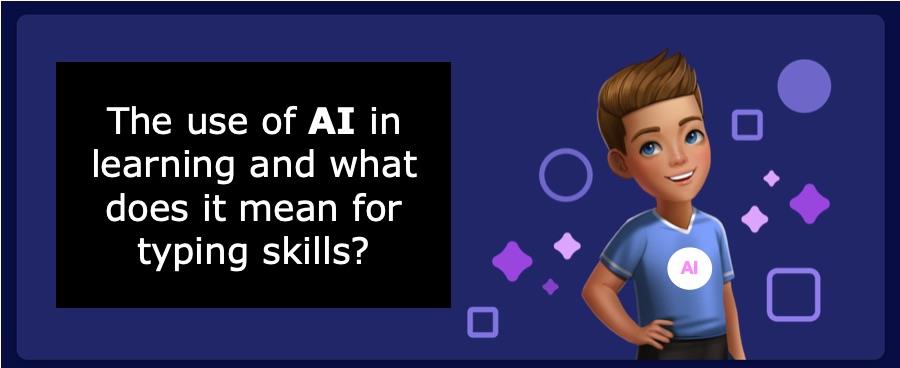
The use of AI in learning and what does it mean for typing skills?
3 minute read
The use of AI in learning and what does it mean for typing skills?
The emergency of AI learning can be viewed as either a positive or a negative. However, the power of platforms such as LUCA, a reading fluency and proficiency platform are undoubtedly the way ahead when integrated sensibly into a learning environment.
LUCA
The following article was produced solely by AI and with no editor input.
As of my last knowledge update in January 2022, KAZ Typing Tutor is a software designed to teach touch typing skills. It's known for its unique and accelerated learning method, focusing on teaching the skill of touch typing without looking at the keyboard. Users follow lessons and exercises that gradually build up their typing speed and accuracy.
Key features of KAZ Typing Tutor often include:
Accelerated Learning: KAZ employs a method that claims to accelerate the learning process, allowing users to become touch typists more quickly.
Interactive Lessons: The program typically includes interactive lessons and exercises to practice typing skills.
Adaptive Learning: Some versions of KAZ may adapt to the user's progress, adjusting the difficulty of lessons based on individual performance.
Visual and Audio Aids: The software may use visual and audio aids to reinforce learning and correct typing techniques.
Progress Tracking: Many typing tutors, including KAZ, often provide tools for users to track their progress over time.
Before making a purchase or commitment to any typing tutor, it's a good idea to check for recent reviews, testimonials, or updates about the specific version of KAZ Typing Tutor you are considering. Additionally, make sure the software is compatible with your operating system and meets your personal preferences for learning.
Please note that there may have been updates or changes to KAZ Typing Tutor after my last training cut-off in January 2022, so it's a good idea to check for the latest information.
While AI and advancements in technology continue to change the landscape of various skills, it's unlikely that typing skills will become obsolete. Instead, the nature of typing skills may evolve, and the focus might shift towards proficiency in newer technologies and interfaces.
Here are a few reasons why typing skills are likely to remain relevant:
Versatility Across Devices:
Typing skills are applicable not only to traditional keyboards but also to touchscreens, virtual keyboards, and other input methods. As technology evolves, being able to input text efficiently remains a valuable skill.
Professional and Academic Requirements:
Many professions and academic fields still require proficient typing skills. Whether it's drafting documents, coding, or engaging in online communication, the ability to type quickly and accurately is often a practical necessity.
Coding and Programming:
For those involved in coding and programming, typing remains a fundamental skill. Writing code efficiently and accurately is crucial in these fields.
Multimodal Interfaces:
While voice recognition and other forms of input are advancing, typing is likely to be a component of multimodal interfaces where users switch between different input methods based on the context.
Text-Based Communication:
Written communication, especially in professional settings, often relies on typed text. Being able to express oneself clearly through written communication remains a valuable skill.
Security and Confidentiality:
Typing skills contribute to the secure input of passwords and other sensitive information. This aspect of typing is likely to remain relevant as cybersecurity continues to be a concern.
While AI can assist in the learning and improvement of typing skills, the fundamental ability to type efficiently is expected to persist. Moreover, as technology evolves, individuals may find themselves using a combination of input methods, including typing, voice commands, and gestures, depending on the context and the devices they interact with. Therefore, while the landscape of skills may shift, the importance of typing skills is likely to endure in the foreseeable future.
11/21/2023 1:55:22 AM
3108
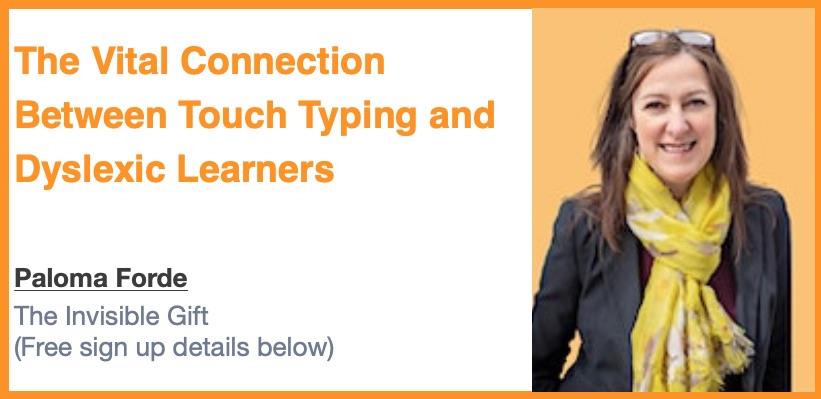
Guest Blog by Paloma Forde, The Invisible Gift + FREE Webinar October 5th
FREE WEBINAR: October 5th.
Dyslexia: Ultimate Success in the Classroom and Beyond!
In today's digital age, touch typing has become more than just a convenient skill; it's a powerful tool for learning and productivity. Touch typing, the ability to type without looking at the keyboard, offers significant benefits for individuals with dyslexia, making it an invaluable asset in their educational journey.
Enhanced Focus and Comprehension: Dyslexic learners often struggle with reading and writing due to difficulties in processing written information. Touch typing reduces the cognitive load associated with searching for keys, allowing dyslexic students to concentrate more on the content they're working on. This heightened focus can lead to better comprehension and retention of information.
Working Memory Links: Touch typing also plays a crucial role in supporting working memory. For dyslexic learners, the cognitive load associated with locating keys and typing slowly can overwhelm their working memory capacity, making it challenging to process and retain information effectively. Touch typing, with its automatic and fluid typing process, lightens this load, allowing individuals to focus more on the content and tasks at hand. By reducing the mental effort required for typing, touch typing frees up valuable working memory resources, enhancing their ability to organise thoughts, solve problems, and engage in complex cognitive tasks more efficiently. This improved working memory capacity contributes significantly to their overall cognitive development and academic success.
Writing Support: For dyslexic individuals, forming letters and words on paper can be challenging. Touch typing eliminates the physical act of writing, making it easier for dyslexic learners to express their thoughts coherently. As a result, they can more effectively convey their ideas in writing, boosting their confidence and performance.
Increased Productivity: Touch typing significantly enhances typing speed and accuracy. Dyslexic learners can complete assignments and tasks more efficiently, reducing frustration and fatigue associated with traditional hunt-and-peck typing methods. This newfound efficiency encourages self-motivation and a sense of accomplishment.
In conclusion, touch typing is not only a valuable skill for general computer use but also a critical support tool for dyslexic learners. It empowers them to overcome obstacles related to written communication and information processing.
By embracing touch typing, dyslexic students can unlock their full potential and navigate the educational landscape with greater confidence and success. For more information on our upcoming webinar being held on October 5th and for FREE sign up:
Dyslexia: Ultimate Success in the Classroom and Beyond!
9/20/2023 9:14:54 AM
3541
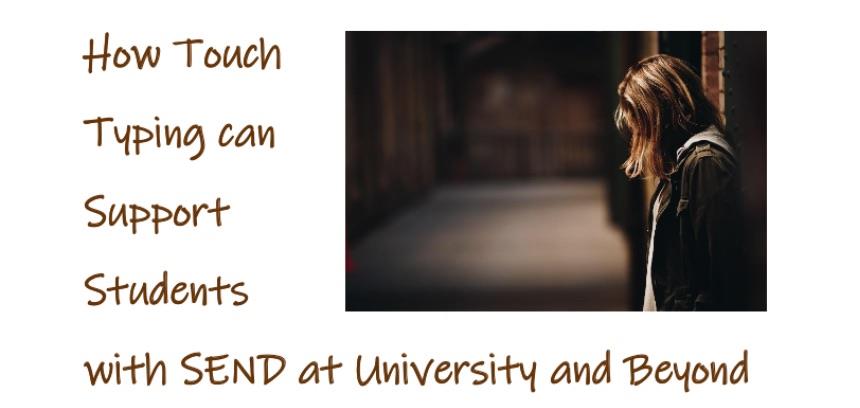
How Touch Typing can Support Students with SEND at University and Beyond
Apprehension is part and parcel of starting university for all students, but for students with SEND, the level of anxiety can be far more significant. Transitional challenges, such as managing their own schedules and navigating the university system, through to social and peer relations can be extremely daunting. However, concerns about the academic demands of university, including the level of coursework, the need for independent study, and the worry about how their specific disabilities or learning difference will impact their academic performance may cause the greatest anxiety.
Through the DSA and assessment centres, students are assessed and recommended various assistive tools and software to accommodate their challenges. However, what needs to be highlighted is that many of these innovative assistive technologies and software are designed with keyboard input in mind, so being proficient in touch typing ensures that students can fully utilise these tools and access the support they need.
However, touch typing isn’t just the key to accessing assistive technology, it offers several additional benefits:
Boosts Self-Esteem and Confidence
Mastering the fundamental and often overlooked skill of touch typing can be a tangible achievement that empowers students in their academic journey at university and beyond. It can boost self-esteem and confidence, creating a positive mindset to achieve and succeed.
Accessibility and Inclusivity
Touch typing can make the learning experience more accessible and inclusive for students with challenges such as dyslexia, ADHD, ASD and visual impairment. It provides them with a practical skill to help with written communication and engage with technology more efficiently at university.
Enhanced Productivity and Efficiency
Touch typing can significantly increase typing speed and accuracy compared to the hunt-and-peck method or with just a few fingers. This improved efficiency can help students complete assignments, take notes, and communicate with peers and teachers quickly, reducing frustration and time pressure.
Reduced Cognitive Load
For students who may already expand more cognitive effort on specific tasks, touch typing can reduce the cognitive load associated with typing. When typing becomes automatic and fluent, the skill moves to the sub- conscious, allowing students to focus more on the content they are producing rather than on the mechanics of typing.
Improved Note-Taking
Neurodivergent students often benefit from effective note-taking strategies. Touch typing enables them to take notes more efficiently during lectures, discussions, and presentations, ensuring they capture essential information accurately. Taking notes independently instils confidence and pride and prepares students for the work place where help in taking notes may not always be available.
Equal Opportunity
Teaching touch typing helps level the playing field and supports neurodivergent students having the same opportunities as their neurotypical peers. It enables them to compete academically and professionally on equal terms.
Job Readiness
Touch typing is a valuable job skill in many professions. Teaching the skill better prepares students for future career opportunities and increases their chances of success in the workplace.
Conclusion
Teaching university students with SEND to touch type is essential for promoting inclusivity, increasing productivity, reducing cognitive barriers, and preparing them for academic and professional success. It is part of creating an environment that values diversity and supports all students in reaching their full potential.
9/7/2023 9:12:22 AM
3476
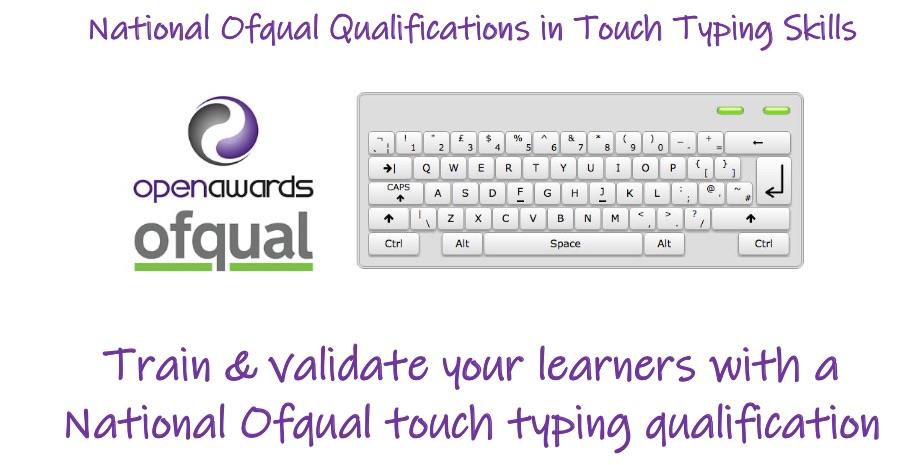
National Ofqual Qualifications in Touch Typing Skills
'Why are we so obsessed with handwriting? Children spend hours, days, months and years learning this skill which will be redundant when they leave school and maybe long before', says Sal McKeown, award-winning journalist and Commissioning Editor at Teaching Times.
'Children will be expected to hand in their university assignments, study work for apprenticeships, day-to-day work in offices, factories, retail etc. on laptops and tablets, typing instead of writing. Even our traditional exams may soon become digital, in line with other countries around the world and some existing vocational exams in the UK. So perhaps schools should accept the inevitable and focus on equipping pupils with the skill before they leave school, even though it is not on the curriculum.'
Fitting in an extra-curricular activity is hard at the best of times, but in our current climate, it may seem impossible. However, it may prove to be the best gift you could give and equip your pupils with for their future!
National Ofqual qualifications in touch typing skills
Due to numerous teacher requests for a recognised qualification in touch typing to validate their learners’ digital skills, we partnered with Open Awards to produce the only National Ofqual-regulated touch typing qualification.
There are two levels available: Level 1 (4 credits) & Level 2 (6 credits), and both comprise two assessments:
A three-minute practical touch typing test recording speed and accuracy
A multiple choice theory paper covering touch typing technique, Repetitive Strain Injury and correct posture whilst typing
Pass marks
Level 1 – Typing test – 25 wpm, Accuracy 85%, Theory – 50% in each category
Level 2 – Typing test – 35 wpm, Accuracy 85%, Theory – 50% in each category
The qualification will be added to pupils’ education records.
Several schools have already entered their KS3 and SEN pupils for the exam with excellent results. Colleges plan to offer their learners the qualifications to prepare them for the workplace.
Testimonials
Cheadle Hulme School
Sarah Lloyd-Davies is a Learning Support Assistant and Exams Officer at Cheadle Hulme School.
‘We have been using the KAZ programme since the start of 2019 and it has made a huge difference to those pupils (both in the junior and senior school) who have enrolled on the course and become competent touch typists.’
She welcomes the new recognised qualification and says it will encourage learners to improve their speed and accuracy - 'It will improve and broaden their prospects for the future. They will be better prepared for the demands of a world which looks to enhance organisational performance and where economies thrive on efficiency and speed of communication and data.'
Moon Hall School
David Curran is Assistive Technologies Lead and Head of Careers at Moon Hall School, a specialist dyslexia school in Reigate, which uses assistive technology to good effect. He pointed out that touch typing allows children to exploit their kinaesthetic skills and they learn patterns on the keyboard for the most commonly used words.
He adds, 'Once they leave school, our learners will be going on to university, apprenticeships, and employment and touch typing is one of the tools they will be using in their day to day life, far more frequently than handwriting. It makes sense to develop their skills as early as possible. Touch typing expands their active vocabulary and as their confidence builds, they become more creative and communicate more effectively and this is reflected in better exam grades.'
However, with the best will in the world, young people are under such pressure now, and they are going to ask, 'What's in it for me?' I believe a recognised Ofqual qualification in touch typing would be the answer. Not only would it be an extra incentive for them to master the skill but also an additional qualification and achievement on their record sheet, which they can take with them moving forward.’
‘While schools are focusing on handwriting, the world is moving on. Maybe it’s time that we paid more attention to the skills needed in the workplace. It is very rare to see handwriting listed as an essential or desirable quality in the twenty-first century’, says Sal McKeown.
https://kaz-type.com/products/openawards-ofqual-regulated-qualification
8/18/2023 4:16:39 AM
5133
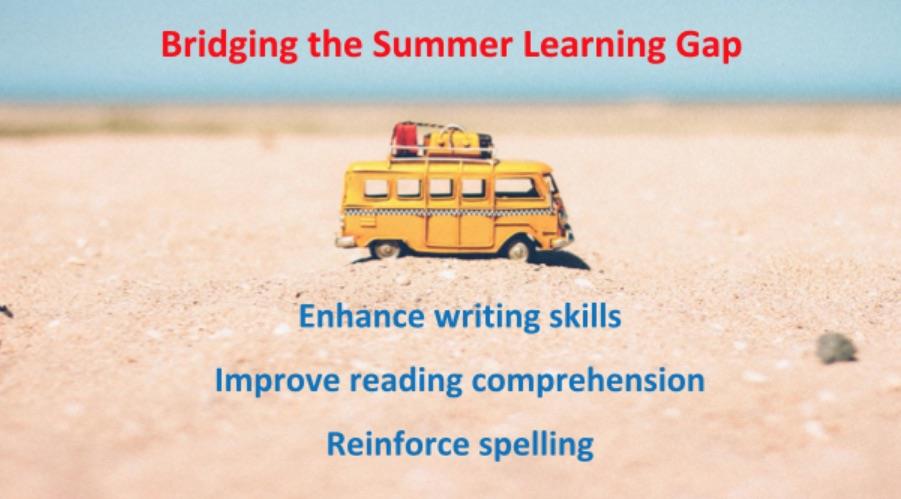
KAZ Type Bridging the Summer Learning Gap
The Power of Touch Typing
As the summer holidays approach, pupils eagerly anticipate a break from the structured routines of school. While it's essential to recharge and enjoy the summer, there is often a concern about the summer learning gap. This phenomenon, known as the ‘summer slide’, refers to the loss of academic skills and knowledge that can occur during an extended break.
The summer learning gap is a well-documented issue affecting pupils of all ages and abilities, especially those who struggle academically at school. Research has shown that pupils can lose a significant portion of their academic progress during the extended break. This regression can particularly impact core reading, writing, and critical thinking skills.
Some parents turn to maths and English tuition over the holidays, but children do not necessarily want or need more of the same. Fortunately, there is a different way to bridge the learning gap, counteract the decline and enhance pupils’ abilities with a valuable skill, transforming the summer break into a period of productivity – touch typing.
What is touch typing?
Touch typing is the skill of typing without looking down at the keyboard. It involves using all digits to type quickly and accurately and relies on familiarity with key placements and regular practice to reinforce learned patterns and build muscle memory. By mastering this technique, pupils can significantly increase their typing speed and accuracy. While it may seem like a simple process, touch typing can significantly impact pupils' academic success.
Enhance writing skills
Writing is a fundamental skill across all subjects. One of the most significant advantages of touch typing is that it can enhance pupils' writing skills. By learning to touch type quickly and accurately, pupils can effortlessly translate their thoughts into words, boosting their writing speed and fluency. This increased efficiency allows them to focus more on the content and structure of their writing rather than struggling with the mechanics of typing. This can lead to more thoughtful and improved composition skills.
Improve reading comprehension
In addition, touch typing proficiency can also help with reading comprehension. When pupils touch type, they can focus more on the text they are reading rather than constantly breaking their concentration by looking up and down between the keyboard and screen. This simple difference can help with reading flow and understanding.
Reinforce spelling
Touch typing can also reinforce spelling and vocabulary, as the repetitive nature of practising exercises automatises correct spelling, builds muscle memory and expands vocabulary.
Increase productivity
Quick and accurate typing increases productivity. Pupils who are proficient touch typists can complete assignments and projects quickly and efficiently, leaving more time for other activities.
SEN
Concerning neurodivergent pupils, learning to touch type can help address many of the challenges they face, from difficulties with writing and spelling to processing and slow work rate. The skill provides a new medium for learning and communicating, encourages independent learning and helps boost confidence and self-esteem.
Conclusion
Learning to touch type over the summer holidays can help bridge the summer learning gap by improving writing skills, enhancing reading comprehension, and increasing productivity while acquiring a valuable lifelong skill. Parents and teachers can offer encouragement and support by providing incentives, such as a reward for reaching a certain speed or accuracy level. They can also integrate touch typing into summer learning activities by having pupils type out summaries of books they have read or journal entries about their summer experiences. By investing a little time each day, pupils can transform their summer break into a period of growth and development.
The summer holidays need not be a time of learning regression and missed opportunities. Learning to touch type offers an effective solution to bridge the learning gap.
National Ofqual-regulated qualifications in touch typing skills – Level 1 & 2
As well as our inclusive touch typing course, we also offer the only national Ofqual regulated qualifications in touch typing skills (Level 1 & 2) for learners who want to verify their skill. All successful learners receive a digital certificate and have the qualification added to their education records.
https://kaz-type.com/products/openawards-ofqual-regulated-qualification
Duke of Edinburgh Awards – Skills Section
Alternatively, we are a DofE Approved Activity Skills Provider, offering our online course towards the Bronze, Silver and Gold Awards.
https://kaz-type.com/duke-of-edinburgh-bronze-silver-gold-award
6/14/2023 8:25:52 AM
4461

 Course Login
Course Login